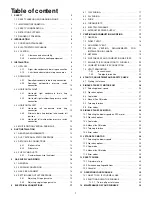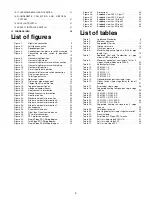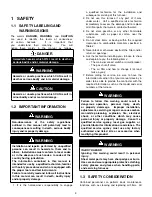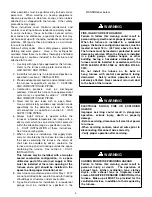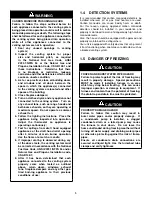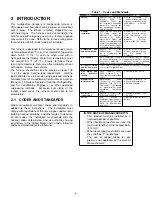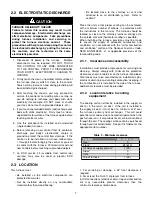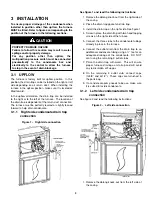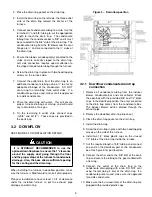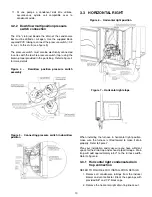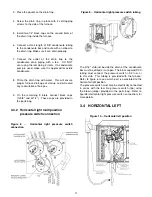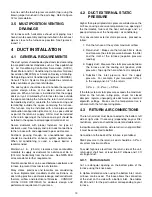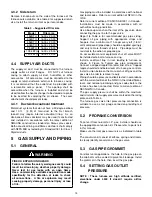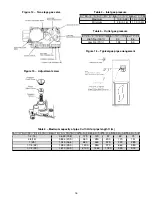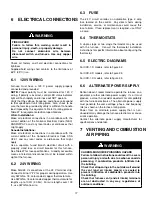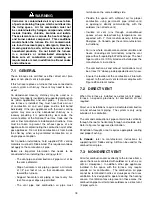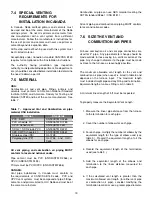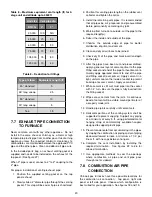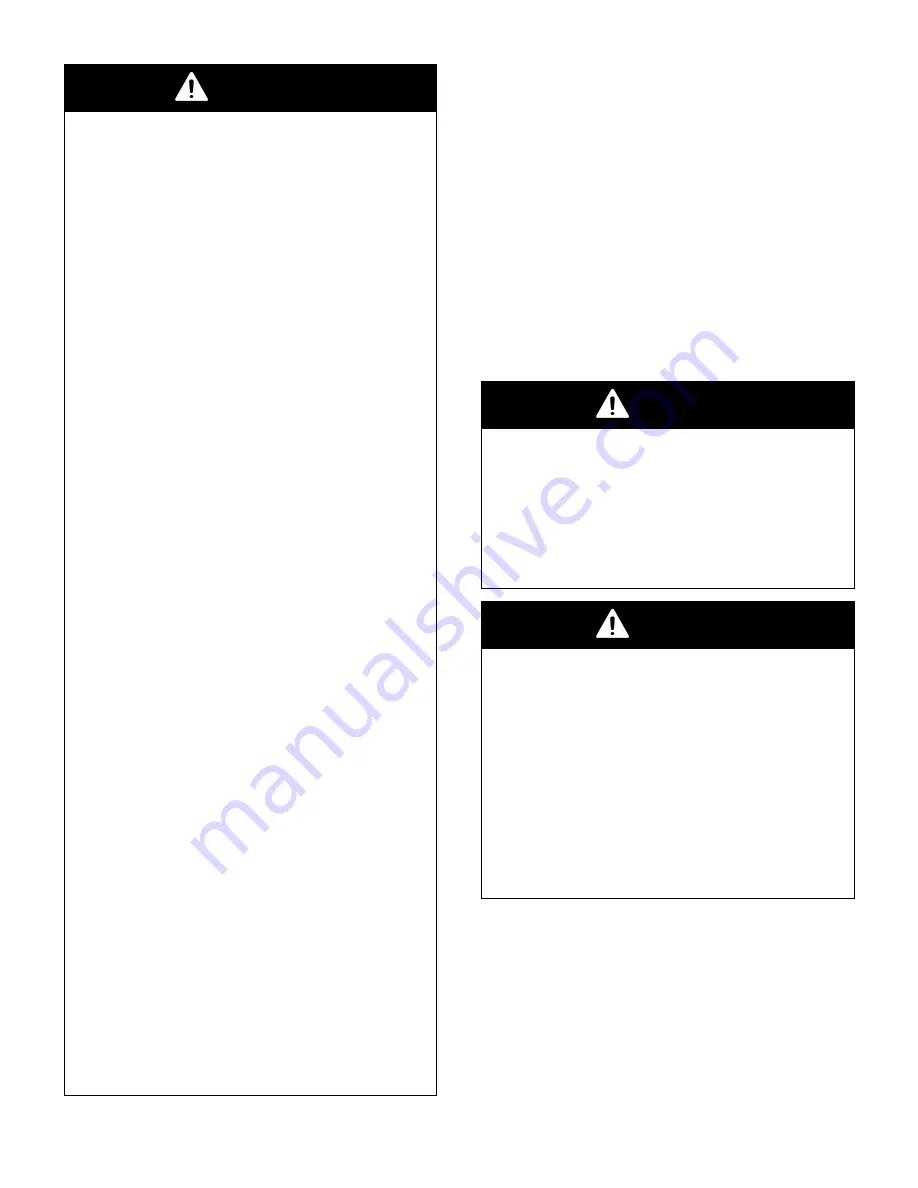
WARNING
CARBON MONOXIDE POISONING HAZARD
Failure to follow the steps outlined below for
each appliance connected to the venting system
being placed into operation could result in carbon
monoxide poisoning or death. The following steps
shall be followed for each appliance connected to
the venting system being placed into operation,
while all other appliances connected to the
venting system are not in operation:
1. Seal
any
unused
openings
in
venting
system;
2. Inspect
the
venting
system
for
proper
size
and
horizontal
pitch,
as
required
in the National Fuel Gas Code,
ANSI
Z223.1/NFPA 54 or the Natural Gas and
Propane Installation Code, CSA B149.1 and
these instructions.
Determine that there
is no blockage or restriction,
leakage,
corrosion and other deficiencies which could
cause an unsafe condition;
3. As far as practical, close all building doors
and windows and all doors between the
space in which the appliance(s) connected
to the venting system are located and other
spaces of the building;
4. Close fireplace dampers;
5. Turn on clothes dryers and any appliance not
connected to the venting system. Turn on
any exhaust fans, such as range hoods and
bathroom exhausts, so they are operating at
maximum speed. Do not operate a summer
exhaust fan;
6. Follow the lighting instructions. Place the
appliance being inspected into operation.
Adjust
the
thermostat
so
appliance
is
operating continuously;
7. Test for spillage from draft hood equipped
appliances at the draft hood relief opening
after 5 minutes of main burner operation.
Use the flame of a match or candle;
8. If improper venting is observed during any
of the above tests, the venting system must
be corrected in accordance with the National
Fuel Gas Code, ANSI Z223.1/NFPA 54 and/or
Natural Gas and Propane Installation code,
CSA B149.1;
9. After it has been determined that each
appliance connected to the venting system
properly vents when tested as outlined
above,
return doors,
windows,
exhaust
fans, fireplace dampers and any other gas-
fired burning appliance to their previous
conditions of use;
1.4
DETECTION SYSTEMS
It is recommended that carbon monoxide detectors be
installed wherever oil or gas fired heaters are used.
Carbon monoxide can cause bodily harm or death.
For this reason, agency approved carbon monoxide
detectors should be installed in your residence and
properly maintained to warn of dangerously high carbon
monoxide levels.
Also, the house should be equipped with approved and
properly maintained fire extinguishers.
Your unit is equipped with safety devices that can prevent
it from functioning when anomalies are detected such as
a blocked venting system.
1.5
DANGER OF FREEZING
CAUTION
FROZEN AND BURST WATER PIPE HAZARD
Failure to protect against the risk of freezing may
result in property damage. Special precautions
MUST be made if installing furnace in an area
which may drop below freezing. This can cause
improper operation or damage to equipment. If
furnace environment has the potential of freezing,
the drain trap and drain line must be protected.
CAUTION
PROPERTY DAMAGE HAZARD
Failure to follow this caution may result in
burst water pipes and/or property damage.
If
a condensate pump is installed,
a clogged
condensate drain or a failed pump may cause
the furnace to shut down.
Do not leave the
home unattended during freezing weather without
turning off water supply and draining water pipes
or otherwise protecting against the risk of frozen
pipes.
Ensure all condensate drain connections are
secured and liquid tight. Use the furnished tube
clamps and verify tightness
5
Summary of Contents for C105-1-D
Page 24: ...Figure 26 Alternate horizontal termination C Figure 27 Venting gasket 23...
Page 25: ...Figure 28 Direct vent clearance 24...
Page 26: ...Figure 29 Other than Direct vent clearance 25...
Page 34: ...Figure 32 Single Stage PSC Wiring diagram...
Page 35: ...Figure 33 Two Stage PSC Wiring diagram...
Page 36: ...Figure 34 Single Stage ECM Wiring diagram...
Page 39: ...Figure 35 Dimensions 38...
Page 40: ...Figure 36 Exploded view CXX 1 X part 1...
Page 41: ...Figure 37 Exploded view CXX 1 X part 2...
Page 43: ...Figure 38 Exploded view Cxx 1 D part 1...
Page 44: ...Figure 39 Exploded view Cxx 1 D part 2...
Page 46: ...Figure 40 Exploded view Cxx 2 D part 1...


